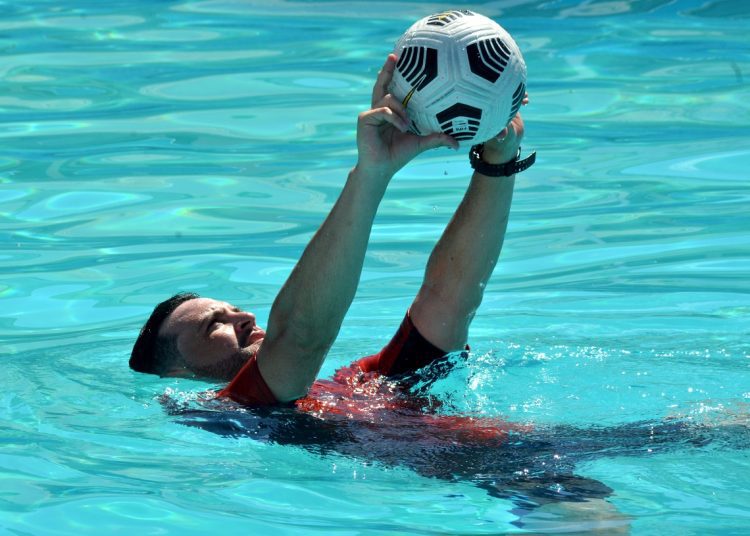The Cuban school of ball control has a long history and worldwide recognition. During the last decades, its exponents have established dozens of records in different categories that are already international and today set the standard within this competition of so many skills.
Among the main stars, we have Jhoen Lefont, an artist who has taken the dreams and challenges of this discipline of great efforts and balance to another level. What distinguishes the man from Matanzas, in addition to his ability to control the ball, is that his records and achievements have come from the water.
For years, Lefont has conquered the pools with his fine and precise touches on the ball, with which he has earned the nickname “Dolphin.” This is his life story…
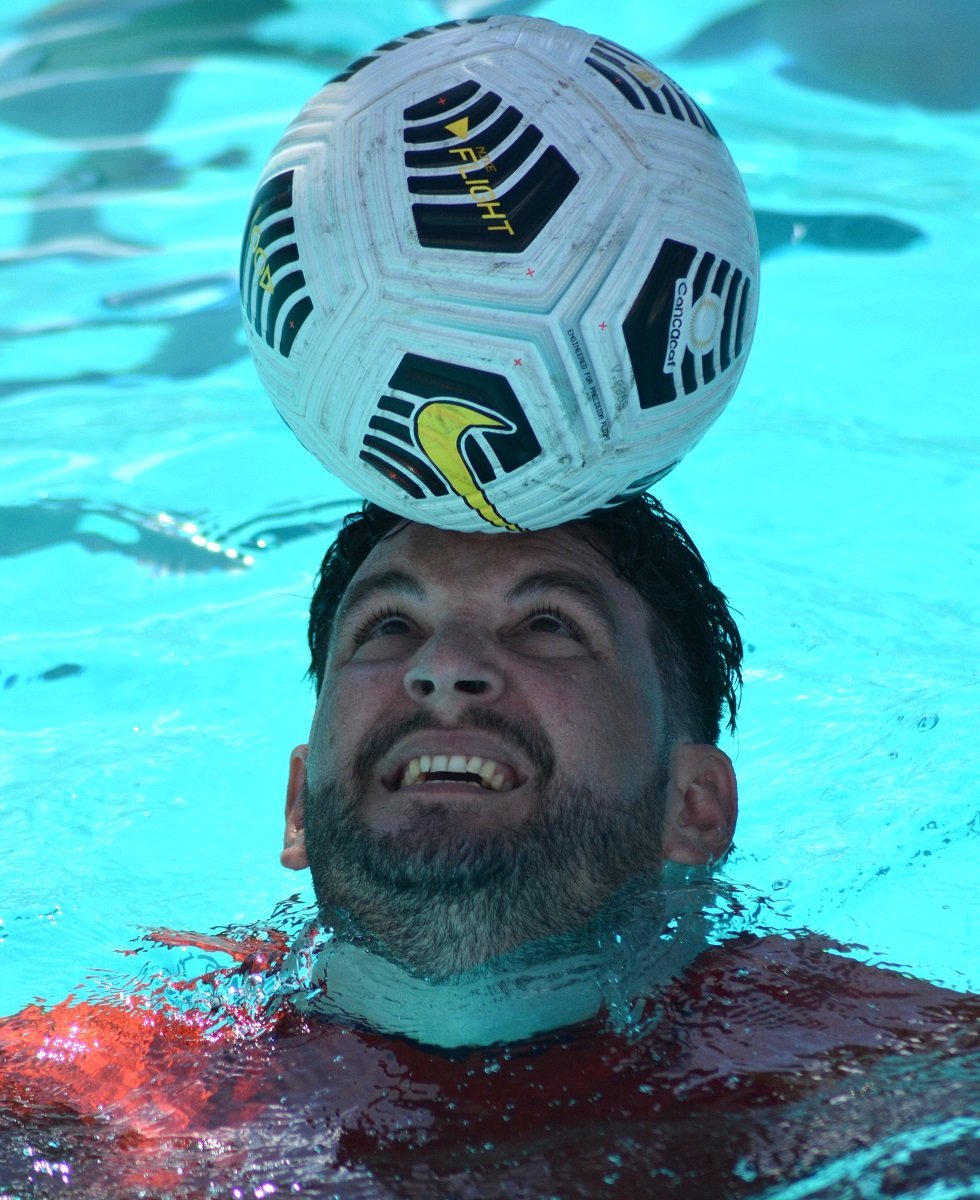
How do you get to the aquatic world?
The child I was, arrived a little abruptly, due to a great scare in my childhood. I have an older brother and I always played with his friends, older boys. We would set out from Simpson Heights, my neighborhood, and go to play in the Yumurí Valley, where there was a river with a somewhat deep lagoon. There, one day they suddenly pushed me and I had a very bad time, a tremendous scare. When we returned home, I told my parents and we decided that it was important to start swimming lessons.
So you didn’t start in water polo…
No, I started swimming, but around the age of 7 we were left without a teacher and I spent almost two years disconnected from the sport until I returned to practice at age 9. In high school I began to be interested in water polo, it was more attractive to me since it was a game and, being a restless child, it completely won me over. I spoke to the teachers and changed sports. It was a great decision.
How did your time in sports go from an early age to the national team?
In polo, I began to have good results in some tournaments that were held in the province. There were very good players and they selected me as the best rookie. I was forced to raise my level. I was also captain of the Matanzas team; we got to be national runners-up and, on several occasions, I finished as the leading scorer. That led me directly to the junior national team, where I was also captain. After that category, I was promoted to the national senior preselection and I was there for five years.

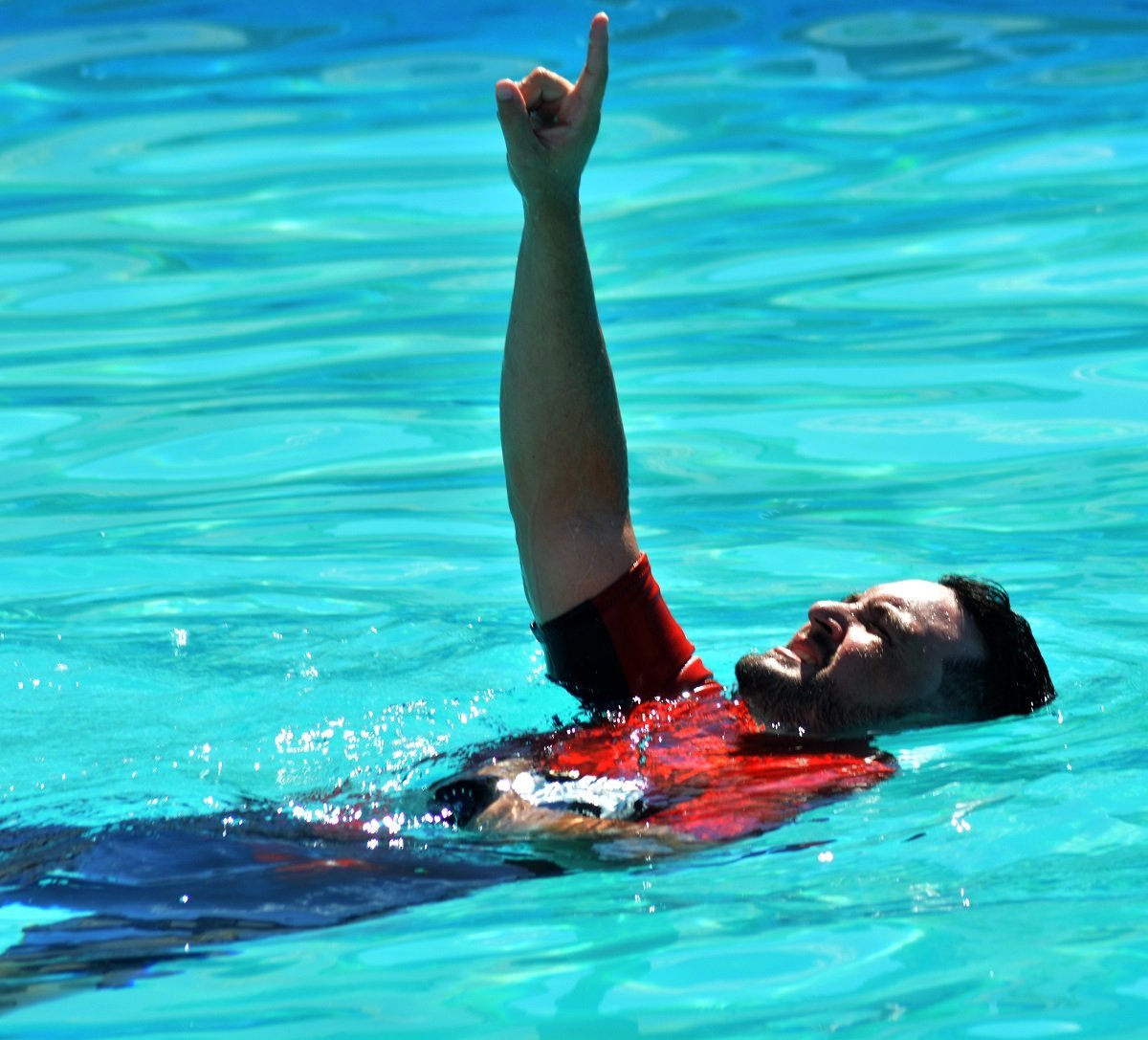
How and when did you discover the skill with the ball in the water?
Since I was a child I had inclinations towards mastering the ball, I practiced it as an exercise in the water because it helped me with my personal preparation and, furthermore, I really liked it. It was never an idea to dedicate myself to it, nor did I think about establishing records. But later the people around me started appreciating my gifts. My water polo coach, Jorge del Valle, told me that what I did should be seen by the person in charge of the ball control school, and that is how I met the brothers Douglas and Erick Hernández.
What sparked your curiosity about pursuing and breaking records in ball control?
Without a doubt, the influence of the school and the history of ball control in Cuba was very important and motivating. Without all the precedents that existed, I believe it would not have been possible to create a new modality. Meeting Douglas in particular was like opening a huge door for all my desires. He immediately put me to the test and liked the proposal of a new modality. At first, he thought it was in the shallow part of the pool, but when he discovered that it was in the deep part, without standing, his interest multiplied. He immediately put me on a training plan, which combined with the two daily work sessions that he had with the national water polo team. Those days were very hard, only hope and dreams make you overcome all those challenges in life.
You are the only one in this difficult specialty of balance and control of the ball in the water, how does the ratification of records and Guinness Records work?
I began to familiarize myself with the process at the end of 2009 when I did my first special preparation to search for a record. Finally, on February 27, 2010, I achieved my first record in the pool of the Habana Libre Hotel, in the modality of most touches (534) with the head. That’s where it all really began. And yes, I am the only one in the world so far in this difficult category of ball control, in which the ratification of records is something complex.
The first thing is that you have to create a profile on the Guinness Records platform, and then make a request for a new record and category every time you go to do something. They take their time, evaluate the proposal, and give you the go-ahead when they believe it is valid to open that new category. It is a demanding process, on par with that prestigious foundation, and you have to comply with everything in detail, which is complicated and stressful.
At first, I remember that I had to collect all the evidence of the record’s creation adjusted to their demands and send it by DHL. Now, fortunately, with the opportunities of technology, you upload it to their platform so that they can analyze everything. Then all that remains is to wait for their confirmation and ratification.

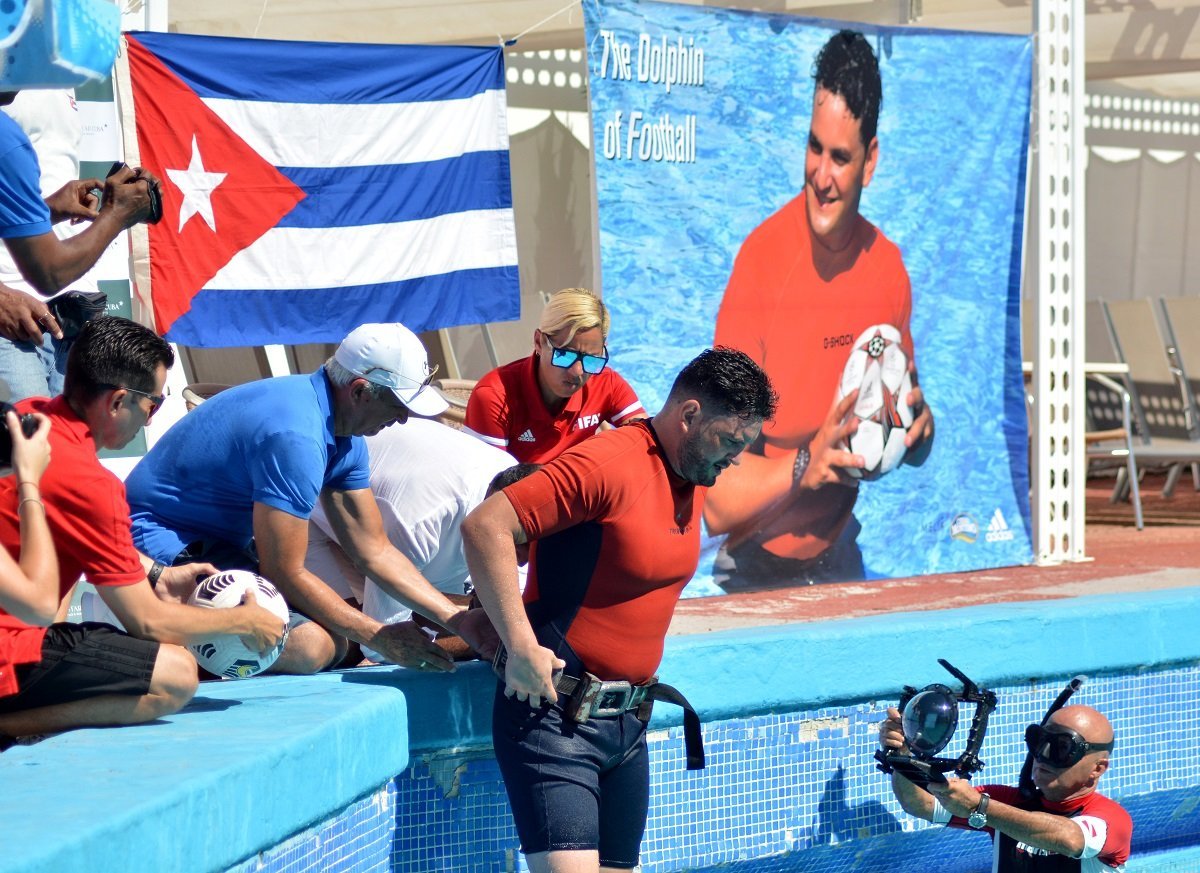
Can you review all your records? Which ones are registered and ratified, and how many are still in process?
I have 3 categories that have been registered in the Guinness World Records, with a total of 9 certified records and one in the process of review.
- More consecutive soccer ball touches with the head while making arm and leg movements in the water to stay afloat (1,203, 1,503, 1,513, 1,664, and 1,958 touches).
- More consecutive soccer ball touches with the head while making arm and leg movements in the water to stay afloat in one minute (162 and 167 touches).
- Longer time balancing a soccer ball on the head, while making arm and leg movements in the water to stay afloat (15:12 and 19:02 minutes). In this category, I have a time of 23:02 minutes in the ratification process.
Besides that, I have 3 other categories that are not yet recognized by Guinness:
- Greater distance swimming, balancing a soccer ball over the head (200, 325, 500, and 600 meters).
- 50 meters swimming on the back, balancing a soccer ball on the head (1:16, 1:14, and 1:01 minutes).
- More consecutive soccer ball touches with the head, with a weight of 15 kg on the waist, while making arm and leg movements in the water to stay afloat (99 and 122 touches).
Those are all the attempts of my sports career. Only the first 3 records would be missing, which were not recognized because not all the evidence was collected, which greatly hurt me. Two of them were in the category of most consecutive touches on a soccer ball (534 and 1,010), and the other in most consecutive touches in one minute (183 touches).
Of all these records, there are three that you achieved last October. Besides good physical and psychological condition, was there any special motivation?
The only thing that changed is that I was involved in the preparation of the national women’s water polo team heading to the Pan American Games in Santiago, Chile. My coach, Jorge del Valle, is also the coach of that team and he asked me to help in training sessions. I have taken advantage of the opportunity and motivation to reach a great physical condition, and when you feel that way, from a psychological point of view, your confidence grows and your chances of overcoming all challenges increase. Furthermore, the birth of my daughter gives an additional plus to my life. There is nothing better than being a father to set new goals in sports and personal life.


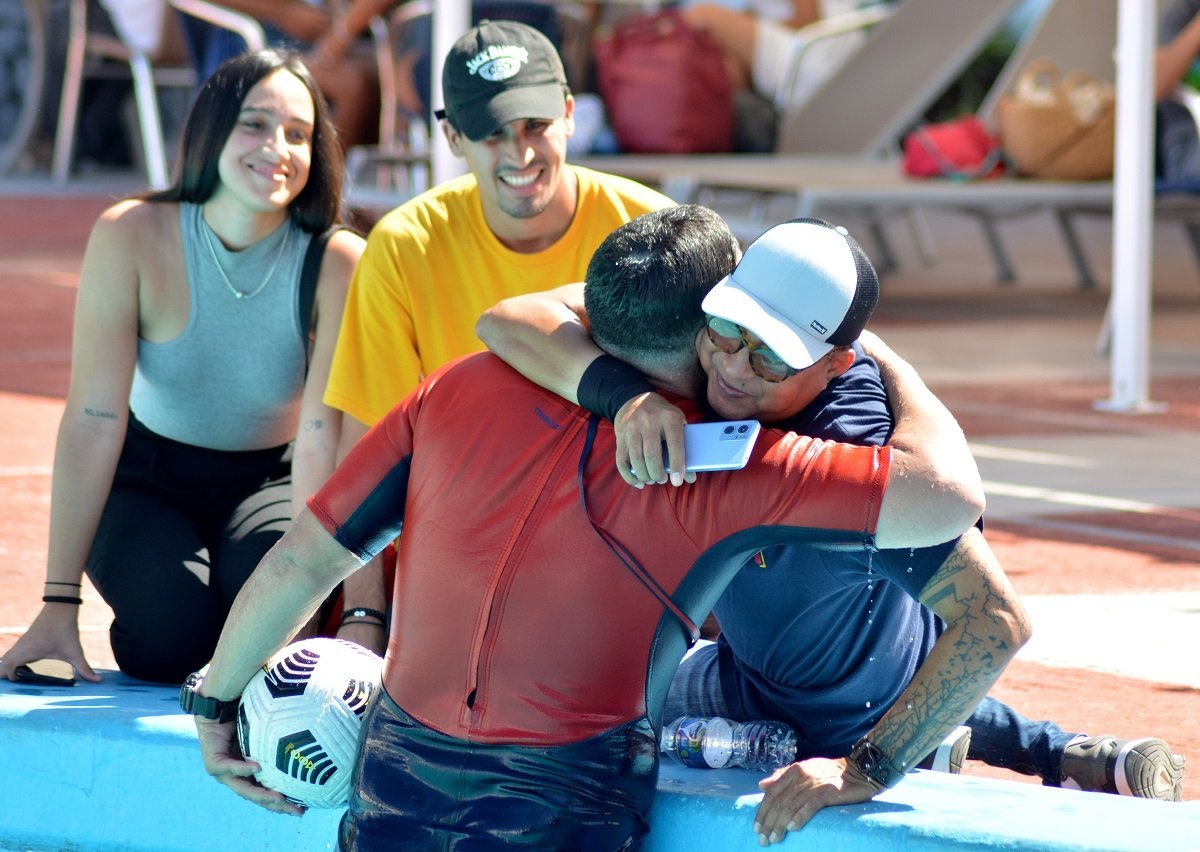
Any new plans before the end of this year?
I always set new goals for myself. When I overcome an obstacle, I take the necessary days of rest and enjoy the achievement, and then I begin to focus on new challenges. Now I think I should take advantage of my current physical state and the conditions created, since my records involve somewhat complex guarantee, especially filming underwater, on the surface and above, work carried out by the specialist divers of the National Aquarium. They are like my family and I always thank them infinitely for being an essential part of this entire story.
The trajectory of the Cuban school of ball control is highly recognized, with the Hernández brothers in the role of founders. In some way does this represent a challenge and a stimulus in your work?
I always say it, they had a lot to do with my motivations, they showed that it was possible and that everything was in the effort, working hard, and being focused on goals and dreams. Today that school is somewhat forgotten. We know that these are complex times, but it would be very good to get back on track and continue offering the possibility to young people who have the skills or the concern to practice the discipline. We are all willing to collaborate and resume this necessary project.
They are exponents of different categories, but is it appropriate for you to look for formulas to hold a national festival in this modality that serves to find new exponents and, in the future, organize an international event of ball control in Cuba?
Of course, it would be a great opportunity. A well-prepared and publicized national festival would give very good results and a great spectacle for the public; the already established modalities could be made much more known and some new ones could even emerge. And internationally we would have a very good opportunity in the next Soccer World Cup that will be here in America, in 3 countries that also have exponents of this modality. Let’s hope that the proposal can reach the decision-makers and add it to this great event and it could begin as an exhibition and promotional show. It would be fair and necessary to continue internationalizing these challenges and skills.
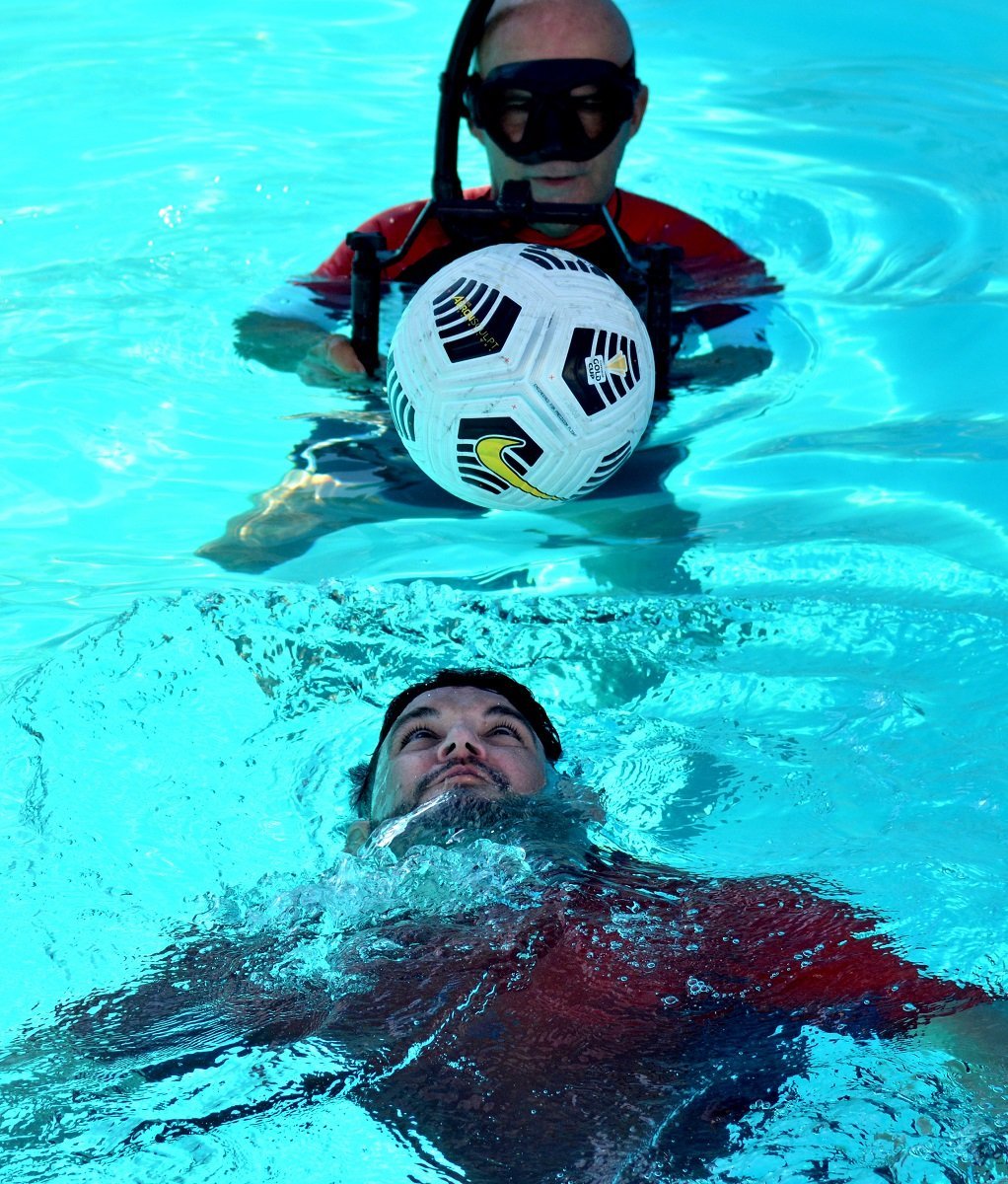

How do you rate the attention of the institutions to this modality that in the best way continually puts Cuba on the sports map and gives us necessary recognition? Do you feel cared for and supported?
In some way, the authorities follow up on what we do and generally include us in the most outstanding categories of the year, but the attention is not up to the results we have achieved and what we have contributed to Cuban sports in terms of prestige. In my case, for example, almost everything is carried out by my contacts, friends, and colleagues who have joined this project for years. Also the family, without them none of this would be possible. With a little more institutional support the results would be greater. This movement must be seen as a great possibility for young people and as a social project.

